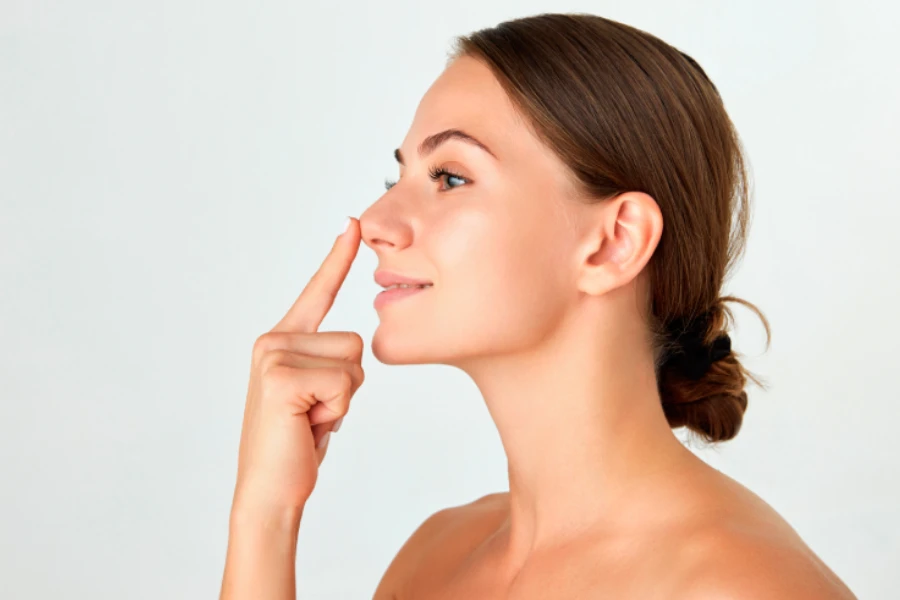The nose plays a central role in facial appearance, self-confidence, and breathing functionality. Issues like a dorsal hump, drooping tip, wide nostrils, or a deviated septum can impact aesthetics and nasal performance, often causing dissatisfaction or breathing discomfort.
Factors such as aging, genetics, injuries, or prior surgeries may lead individuals to consider rhinoplasty, a transformative procedure for enhancing nasal shape and function. Whether addressing cosmetic concerns or breathing difficulties, advancements in surgical and non-surgical techniques make achieving a balanced, proportionate nose more accessible than ever.
Rhinoplasty can reshape, resize, and correct structural issues like a deviated septum or nasal asymmetry, offering tailored results that enhance natural beauty while restoring confidence and comfort.
Rhinoplasty in Turkey with Op. Dr. Ali Çetinkaya offers exceptional results, combining advanced techniques, personalized care, and affordable pricing, making him a top choice for nose surgery worldwide.
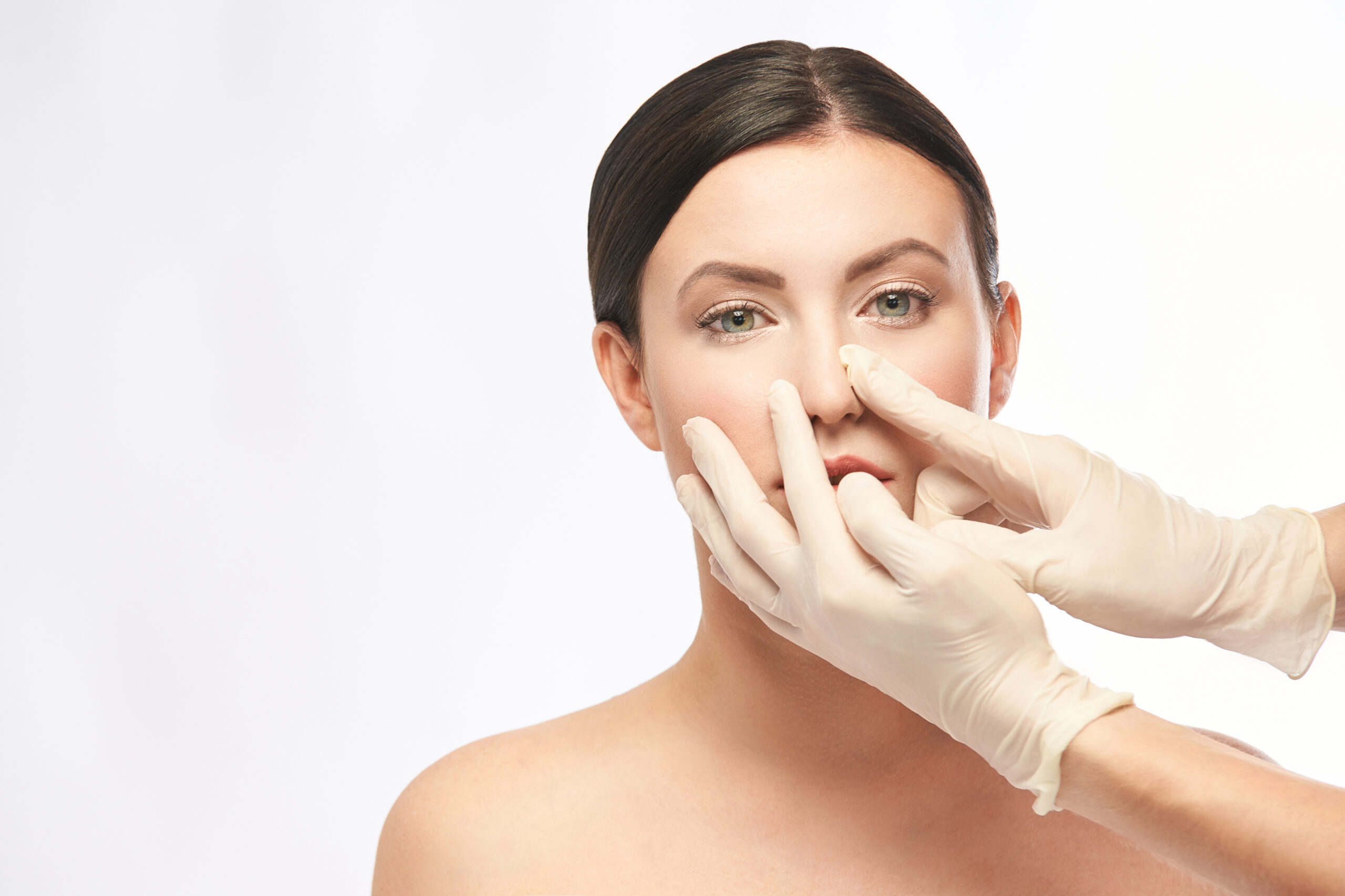
What is Rhinoplasty?
Rhinoplasty, commonly referred to as a nose job, is a specialized surgical procedure designed to enhance the shape, size, and functionality of the nose. Over time, factors such as genetics, aging or trauma can affect nasal structure, leading to concerns like a deviated septum, nasal asymmetry or an aesthetically displeasing shape. Nose reshaping aims to address these issues, providing a balanced, harmonious, and functional outcome.
This procedure is often performed as part of a broader facial enhancement plan and is frequently combined with other surgeries such as septoplasty or chin augmentation to achieve optimal results. Advances in surgical and non-surgical rhinoplasty techniques have made it possible to achieve minimal scarring, faster recovery, and natural-looking results.
| 📞Get More Information |
|---|
Understanding nasal anatomy is crucial for successful rhinoplasty outcomes. The procedure carefully considers the structural and functional components of the nose:
- Nasal Cartilage: Key to shaping the nasal tip and bridge. Issues like a drooping tip or bulbous nasal tip can be addressed through precise cartilage reshaping.
- Nasal Bone: Provides the framework for the nose. Irregularities like a dorsal hump or wide nasal bridge are often corrected in rhinoplasty.
- Septum: Plays a vital role in supporting the nose and facilitating airflow. A deviated septum rhinoplasty focuses on correcting breathing difficulties while maintaining symmetry.
- Skin and Soft Tissue: Thickness and elasticity of nasal skin are essential factors in determining the outcome of the surgery.
- Nasal Airways: Functional aspects like breathing and airflow are closely evaluated during planning, ensuring that nasal surgery not only enhances appearance but also maintains or improves functionality.
Why Choose Rhinoplasty?
Rhinoplasty is more than a cosmetic procedure; it can significantly improve quality of life by addressing functional concerns such as difficulty breathing. From wide nose rhinoplasty to hump reduction rhinoplasty, each procedure is tailored to the individual’s unique facial structure and goals. Additionally, liquid rhinoplasty or non-surgical rhinoplasty offers a temporary and non-invasive alternative for those seeking minor adjustments.
This versatile procedure has become increasingly popular among men and women of various age groups, ethnic backgrounds, and aesthetic preferences, further solidifying its position as one of the most sought-after cosmetic and functional surgeries worldwide.
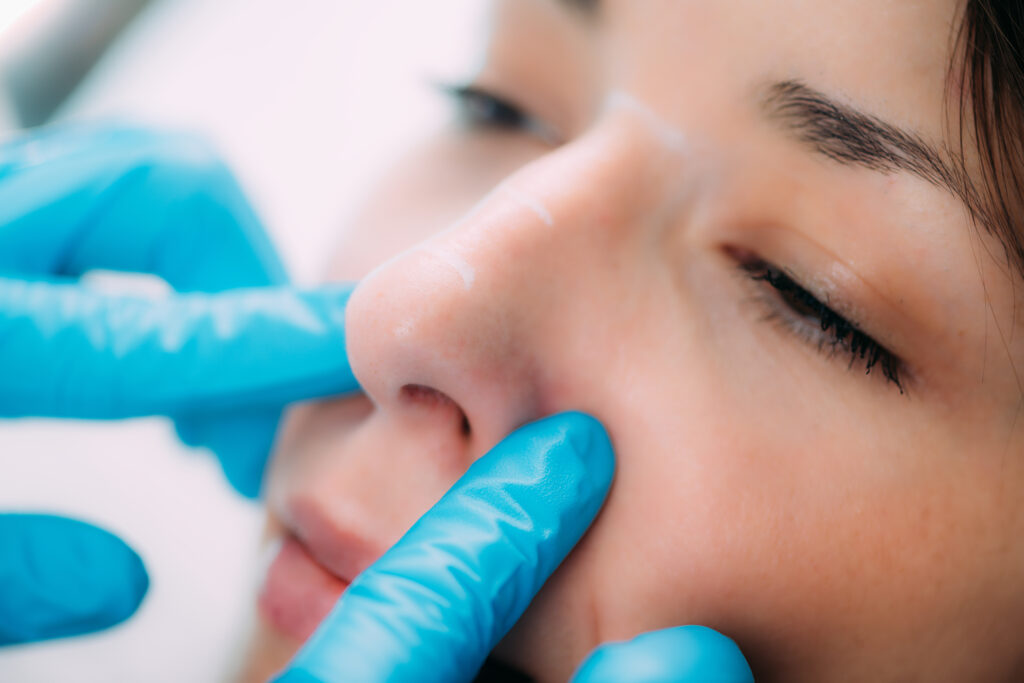
What Are the Main Purposes of Rhinoplasty?
| Purpose | Benefits | Who Is It Suitable For? |
|---|---|---|
| Reduce Nasal Size | Achieves smaller, more proportionate nasal appearance. | Individuals with large nasal structures. |
| Enhance Nasal Tip | Creates a refined, symmetrical nasal tip. | Those with bulbous, drooping or asymmetrical nasal tips. |
| Correct Nasal Deviation | Improves breathing and restores facial harmony. | People with nasal asymmetry or deviated septum. |
| Bridge Reduction | Reduces the prominence of nasal humps. | Those with a prominent nasal hump or dorsal irregularities. |
Rhinoplasty is a comprehensive surgical procedure designed to address various nasal concerns, enhancing both functionality and aesthetics. Below are the primary applications of nose reshaping:
1. Reduce Nasal Size
This procedure aims to resize the nose to achieve better facial harmony. It is suitable for individuals who feel their nose is disproportionately large.
How Is It Performed?
- Excess cartilage and bone are carefully removed or reshaped.
- The nose is adjusted to achieve a natural and balanced appearance.
Benefits:
- Improved facial aesthetics and balance.
- Boosts self-confidence with a more proportionate look.
2. Enhance Nasal Tip
This procedure focuses on refining the nasal tip to make it more defined and symmetrical. It is commonly sought by individuals with bulbous or asymmetrical tips.
How Is It Performed?
- Cartilage in the nasal tip is reshaped or removed as needed.
- Support structures are enhanced to maintain the desired shape.
Benefits:
- Creates a more symmetrical and refined nasal tip.
- Enhances overall facial harmony.
3. Correct Nasal Deviation
This procedure addresses structural issues like deviated septum to improve nasal function and appearance. Ideal for those experiencing breathing difficulties.
How Is It Performed?
- The septum and nasal bones are realigned.
- Any obstructions affecting airflow are removed.
Benefits:
- Improved breathing function.
- Balanced and symmetrical nasal appearance.
4. Bridge Reduction
This procedure involves reducing the nasal bridge to eliminate humps or bumps, achieving a smoother contour.
How Is It Performed?
- Excess bone and cartilage on the bridge are removed or reshaped.
- The nasal structure is refined to achieve a sleek profile.
Benefits:
- Eliminates humps for a smoother bridge.
- Enhances facial symmetry and aesthetics.
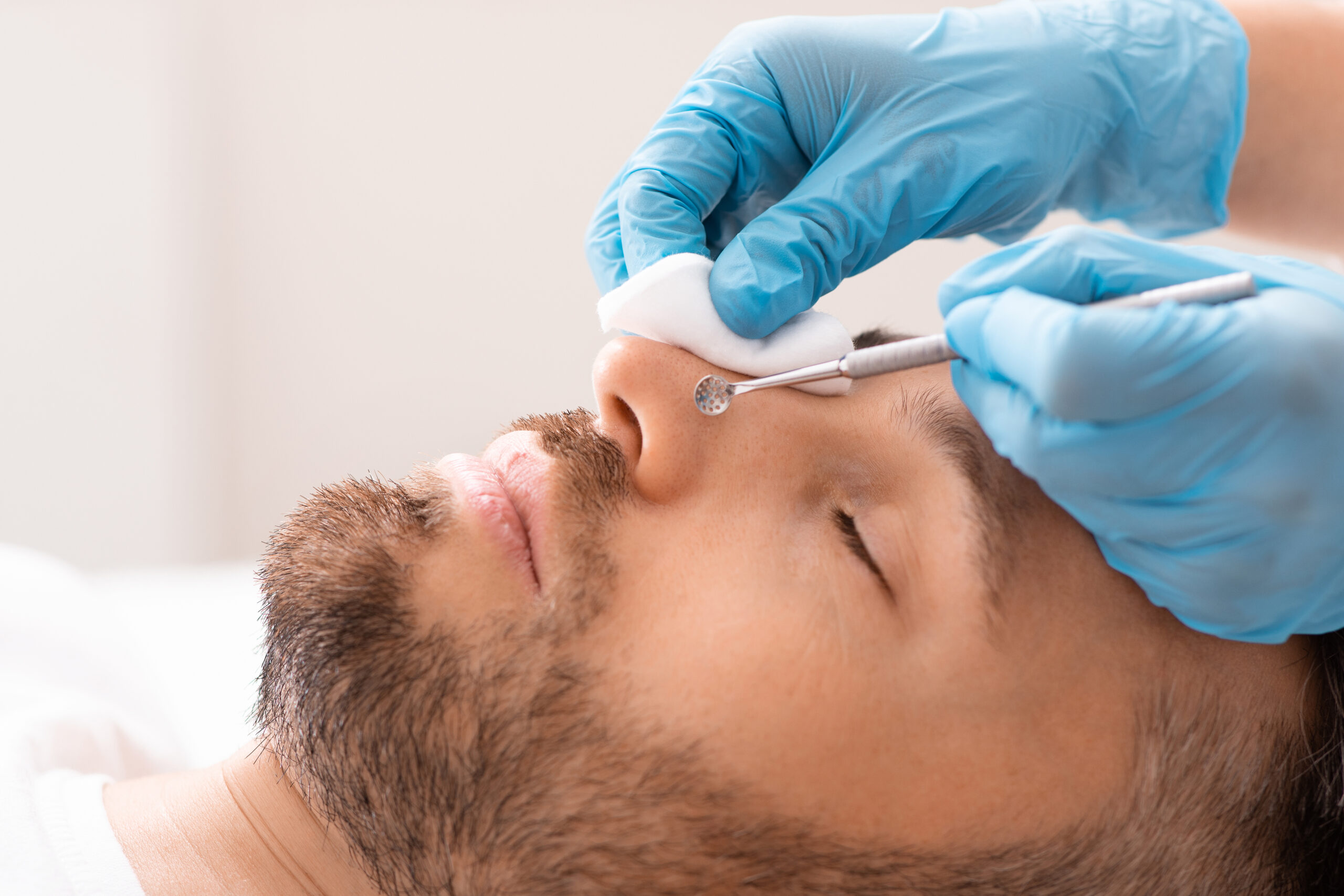
Surgical Procedure
Rhinoplasty, commonly known as a nose job, is a meticulously planned procedure designed to enhance both the aesthetic and functional aspects of the nose. Below is a detailed breakdown of the surgery process, from consultation to recovery.
How is Rhinoplasty Performed?
| Step | Phase | Details |
|---|---|---|
| 1 | Consultation | The patient’s nasal structure and aesthetic concerns are evaluated. Goals and expectations for the rhinoplasty are discussed with the surgeon. |
| 2 | Physical Examination | A detailed assessment of nasal shape, bone structure, and cartilage is conducted to choose the appropriate surgical technique. |
| 3 | Anesthesia | General anesthesia or local anesthesia with sedation is used. The decision depends on the procedure’s complexity and the patient’s health condition. |
| 4 | Incision | Depending on the approach (open or closed rhinoplasty), incisions are made inside the nostrils or across the columella for precise access to the nasal structure. |
| 5 | Reshaping the Nose | Bone and cartilage are sculpted to achieve the desired shape. In some cases, grafts are added for structural support. |
| 6 | Functional Adjustments | If necessary, septoplasty is performed to correct nasal obstructions and improve breathing. |
| 7 | Closure | The incisions are closed with sutures, and the nose is stabilized using splints or nasal packing to support the new structure. |
| 8 | Recovery | Swelling and bruising are common in the first weeks. The final results become apparent after a few months as the nose fully heals. |
Potential Risks and Complications
Rhinoplasty, also known as a nose job, is a highly effective procedure that enhances both the aesthetic and functional aspects of the nose. However, like any surgical procedure, it carries potential risks and complications that patients should be aware of. Below, we’ve detailed the possible complications categorized into early and late phases for better understanding.
Early complications typically arise within the first few days or weeks post-surgery. They are usually temporary and manageable with appropriate care and monitoring:
- Swelling and Bruising: Common around the nose and eyes, subsiding within 1-2 weeks.
- Post-Operative Bleeding: Mild bleeding is normal but can occasionally require intervention.
- Infection: Rare but possible; antibiotics are typically effective in managing this.
- Discomfort or Pain: Usually mild and controllable with prescribed medication.
Late complications tend to appear weeks or even months after the surgery. While these are less common, they may require further medical attention or revisions:
- Nasal Asymmetry: Minor irregularities in the nasal shape may occur, requiring revision surgery.
- Breathing Difficulties: In rare cases, functional issues can arise due to structural changes.
- Scarring: Uncommon with skilled techniques but possible in cases of poor wound healing.
- Persistent Swelling: Some swelling may last for several months, especially on the nasal tip.
In extremely rare cases, rhinoplasty may lead to more serious complications:
- Septal Perforation: A hole in the septum that can affect nasal function.
- Loss of Sensation: Temporary or permanent numbness around the nose.
- Adverse Reaction to Anesthesia: Rare but possible, monitored carefully by the surgical team.
Discussing these risks during your consultation will help you make an informed decision. Choosing an experienced and board-certified surgeon minimizes the likelihood of complications and ensures a safe and successful rhinoplasty procedure.
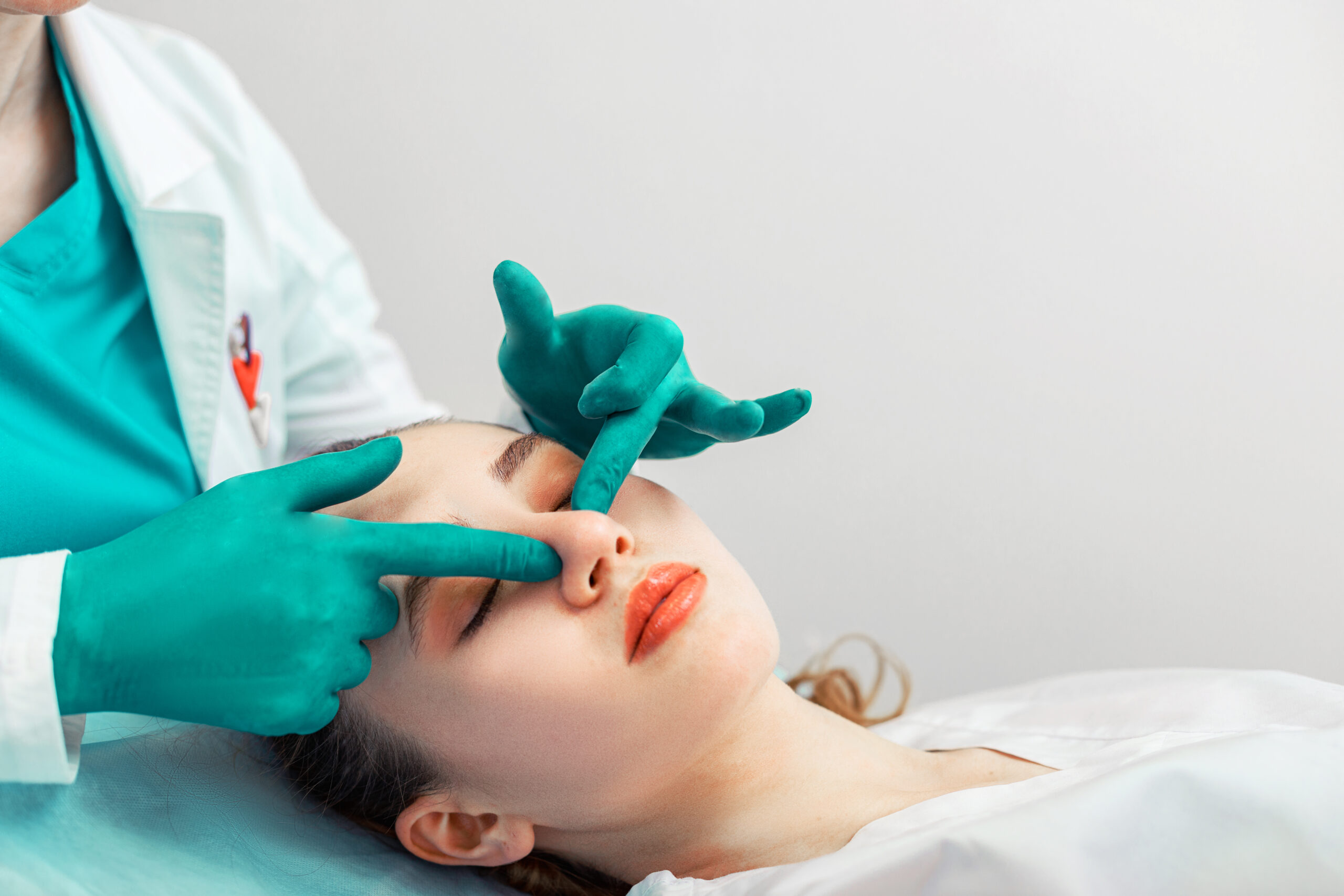
Post-Surgery Care
| Timeframe | Description |
|---|---|
| First 24-48 Hours | Rest and take prescribed medications. Swelling and bruising are common. Careful positioning is important to minimize discomfort. |
| First Week | Swelling and bruising peak, but begin to reduce. Mild discomfort is expected. Stitches are typically removed within 5-7 days. |
| First Month | Swelling continues to subside, and the aesthetic results start to show. The nasal structures are fully adjusting to the changes. |
| 6-12 Months | Final results become more noticeable. The nose appears completely healed, with natural contours. |
| Head Elevation | Keeping your head elevated helps reduce swelling. |
| Avoid Direct Pressure | Avoid direct pressure on the nose to prevent complications. This includes sleeping on your back with your head elevated. |
| Medications | Follow your doctor’s instructions and take prescribed pain relievers and antibiotics as directed to minimize discomfort and prevent infection. |
| Wound Care | Follow your doctor’s instructions for wound care, including proper cleaning and dressing of the surgical site. |
| Follow-up Appointments | Schedule follow-up visits: first (5-7 days), second (1-2 weeks), third (1 month), and long-term check-ups (6-12 months) to monitor progress. |
| Physical Activity | Avoid strenuous exercises for the first 4-6 weeks. Light activities are allowed, but it’s best to avoid any excessive movement that might disrupt the healing process. |
| Skin Care | Avoid sun exposure and use sunscreen to protect your healing skin from harmful UV rays. |
| Work and Social Life | You may return to light work activities within 1-2 weeks. It is advisable to wait 2-3 weeks before resuming social activities to allow for proper healing and to avoid unnecessary stress on your nose. |
After rhinoplasty surgery, swelling and bruising are common, but these symptoms gradually subside over the first few weeks, with noticeable improvement within the first month. Proper post-operative care, including following your doctor’s medication instructions and attending follow-up appointments, is crucial for achieving the best aesthetic results and ensuring a smooth recovery process.
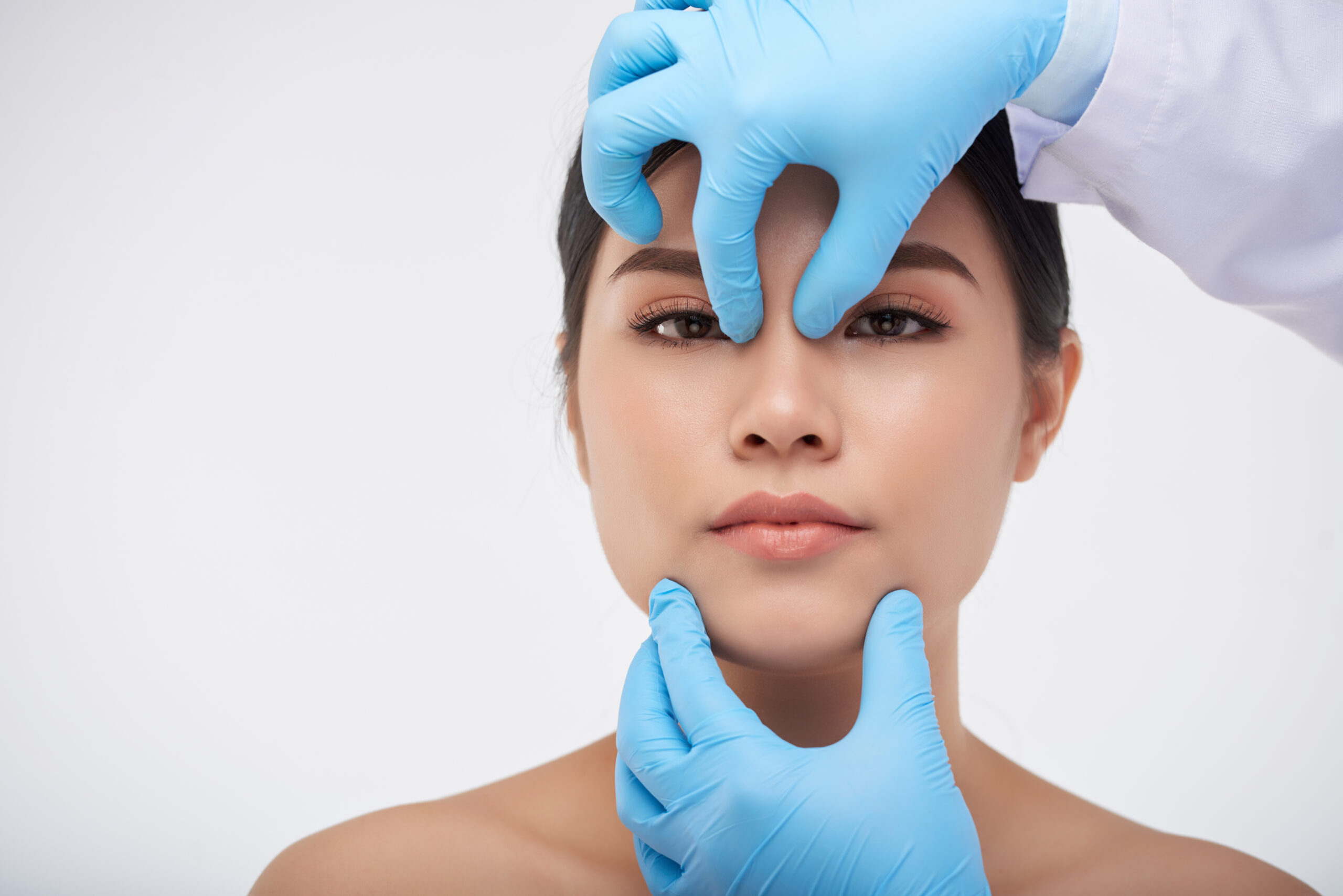
What to Expect During and After Rhinoplasty
Rhinoplasty, commonly known as a nose job, is a personalized surgical procedure designed to reshape or enhance the structure of the nose, improving both its aesthetic appearance and functionality. Whether you are addressing cosmetic concerns or medical issues like a deviated septum, rhinoplasty is tailored to meet your individual goals.
During the Procedure
Rhinoplasty surgery is performed under anesthesia to ensure comfort and safety throughout the procedure. There are two primary types of anesthesia used in rhinoplasty:
- Local Anesthesia with Sedation: This is typically used for less complex procedures. The area around the nose is numbed, and you are given medication through an IV to make you feel groggy but not fully asleep.
- General Anesthesia: For more complex surgeries, general anesthesia is administered either through inhalation or an IV line. It affects your entire body, making you fully asleep during the procedure.
The surgery may involve internal work on the nose or a small external incision at the base of the nose. The surgeon will adjust the bone and cartilage to reshape the nose. Depending on the degree of change, cartilage may be taken from inside the nose, the ear, or other areas of the body, like the ribs.
In cases of a deviated septum, which causes difficulty breathing, the septum can be straightened during the surgery for improved airflow.
After the Procedure
Post-surgery, it is essential to follow specific guidelines for optimal recovery and results:
- Resting Position: Rest with your head elevated to minimize bleeding and swelling.
- Internal Bandages: You may have internal splints or bandages that stay in place for 1 to 7 days.
- External Splint: A protective splint may be taped to your nose for about one week to support the healing process.
Post-surgery care instructions:
- Avoid vigorous physical activity, such as running or heavy lifting.
- Do not blow your nose or engage in activities that strain the nose.
- Avoid direct pressure on the nose, such as wearing glasses, for at least four weeks.
- Use SPF 30 sunscreen on your nose to prevent discoloration.
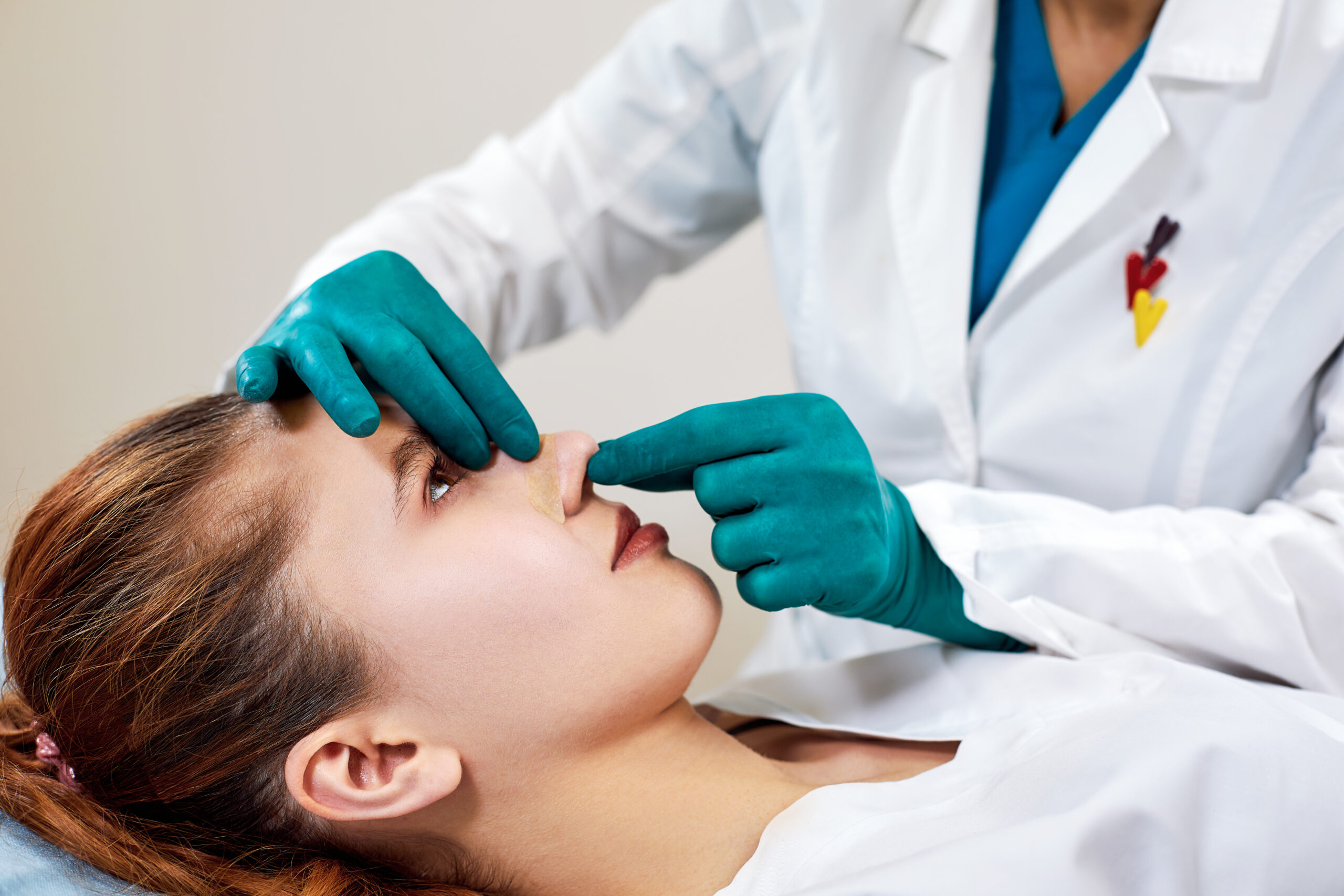
Rhinoplasty Before and After
Rhinoplasty, also known as a nose job, is a surgical procedure aimed at enhancing the appearance and function of the nose. This procedure can address aesthetic concerns such as a crooked nose, a hump, or a wide nasal bridge, as well as functional issues like breathing difficulties. A customized approach is essential, ensuring that the result is natural, balanced, and harmonious with the patient’s face.
| Concern | Before | 🌟 After |
|---|---|---|
| Nose Shape | A crooked or asymmetrical nose with a noticeable hump | A more symmetrical, balanced nose with a smooth, natural profile |
| Nasal Tip | A drooping or bulbous nasal tip | A lifted, refined, and aesthetically pleasing nasal tip |
| Nasal Bridge | A wide or uneven nasal bridge | A more harmonious, narrow, and proportionate nasal bridge |
| Breathing Issues | Difficulty breathing due to structural issues | Improved airflow and easier breathing following functional rhinoplasty |
| Facial Harmony | The nose may appear disproportionate to the face | A nose that blends naturally with the rest of the facial features |
| Longevity | Temporary dissatisfaction or discomfort with initial results | Long-lasting, refined results with a youthful and balanced appearance |
In the first few days after surgery, you may experience mild swelling and drainage, including mucus and old blood. As you heal, it’s common to have swelling around the nose and eyes, which can last up to a few weeks. However, the majority of swelling subsides within a year, with final results visible after the full healing process.
In the long-term, your nose will continue to change as you age, regardless of whether you undergo surgery. Therefore, it can take time to fully appreciate the final appearance of your nose following rhinoplasty.
This process is tailored to fit your personal anatomy and goals, ensuring that you achieve natural, long-lasting results. If you are considering rhinoplasty, speak with a skilled surgeon to understand the procedure, risks, and expected outcomes.
Rhinoplasty Prices in Turkey 2025
Rhinoplasty (nose job) prices can vary depending on the surgical techniques used (open rhinoplasty, closed rhinoplasty, ethnic rhinoplasty), the complexity of the procedure, and the patient’s specific needs. Op. Dr. Ali Çetinkaya’s clinic adopts a patient-centered approach to ensure the best and most natural results. Rhinoplasty is an essential part of facial rejuvenation, with the surgical process tailored to the patient’s facial features and aesthetic goals.
| 📞Request a Quote |
|---|
For detailed information on rhinoplasty costs in Turkey and to receive a personalized quote, you can contact Op. Dr. Ali Çetinkaya’s clinic. Dr. Çetinkaya develops the most suitable treatment plan based on each patient’s unique facial anatomy, ensuring natural and aesthetically perfect results.
Frequently Asked Questions
Who is the best rhinoplasty surgeon in Turkey?
Among the top recommendations for the best rhinoplasty surgeon in Turkey, Op. Dr. Ali Çetinkaya stands out for his expertise in nose reshaping, nose job, and deviated septum rhinoplasty. Known for his mastery in both cosmetic nose surgery and functional nasal surgery, Dr. Çetinkaya is recognized as one of the leading specialists in Turkey for rhinoplasty procedures. Whether you’re seeking hump reduction rhinoplasty, tip rhinoplasty, or revision rhinoplasty, his skills make him a top choice for those looking for optimal results.
What is rhinoplasty?
Rhinoplasty, commonly referred to as a nose job, is a surgical procedure aimed at reshaping the nose to improve its appearance or functionality. This cosmetic nose surgery can address a variety of concerns such as a hump, a wide nose, a deviated septum, or other irregularities, to enhance the overall facial balance. It can also improve breathing difficulties caused by structural issues in the nose.
Who is a good candidate for rhinoplasty?
Rhinoplasty is suitable for individuals who are unhappy with the shape, size, or function of their nose. Ideal candidates are in good overall health, have fully developed facial structures (typically age 18 or older), and have realistic expectations about the results. Both men and women seek nose reshaping for cosmetic reasons, while some may also require nasal surgery to address breathing problems or correct a deviated septum.
What are the different types of rhinoplasty?
There are several types of rhinoplasty, including traditional cosmetic rhinoplasty, septoplasty (for nasal breathing issues), and revision rhinoplasty (to correct previous surgeries). Additionally, non-surgical rhinoplasty or liquid rhinoplasty uses injectable fillers to reshape the nose without surgery, offering temporary results. Each procedure is tailored to the patient’s specific goals and anatomy.
How long does a rhinoplasty procedure take?
The duration of a rhinoplasty procedure typically ranges from 1 to 3 hours, depending on the complexity of the surgery. A simple nose reduction or hump removal may take less time, while more extensive reshaping or correction of a deviated septum could take longer.
What should I expect during rhinoplasty recovery?
Rhinoplasty recovery time can vary, but patients generally experience swelling, bruising, and discomfort for the first 1-2 weeks. Most individuals can return to light activities within 1-2 weeks, but more strenuous exercises should be avoided for several weeks. It may take 6-12 months for the final results to fully settle and for any swelling to subside. A follow-up consultation with your surgeon will be scheduled to monitor your progress.
Does rhinoplasty leave scars?
Rhinoplasty scars are typically minimal. In open rhinoplasty, a small incision is made across the columella (the tissue between the nostrils), which can be barely visible after healing. Closed rhinoplasty involves incisions inside the nostrils, leaving no external scars. Scarring generally fades over time, becoming less noticeable as the healing progresses.
Does insurance cover rhinoplasty?
Insurance coverage for rhinoplasty is typically limited to functional procedures, such as correcting a deviated septum that affects breathing. Cosmetic rhinoplasty, which is performed purely for aesthetic reasons, is usually not covered by insurance. Be sure to check with your insurance provider and surgeon to clarify your coverage options.
Can rhinoplasty fix a deviated septum?
Yes, rhinoplasty can address a deviated septum, which may cause breathing difficulties. Septoplasty, often performed in conjunction with cosmetic rhinoplasty, corrects the misalignment of the nasal septum, improving airflow and relieving congestion while also enhancing the external appearance of the nose.
What are the risks of rhinoplasty?
Like any surgery, rhinoplasty carries risks such as infection, bleeding, and adverse reactions to anesthesia. Other potential risks include asymmetry, scarring, difficulty breathing, or dissatisfaction with the cosmetic result. However, these risks are minimized when the procedure is performed by a skilled and experienced rhinoplasty surgeon.
What should I look for in a rhinoplasty surgeon?
When choosing a rhinoplasty surgeon, look for one who is board-certified, has extensive experience in nasal surgery, and demonstrates a deep understanding of facial anatomy. It’s also important to review before-and-after photos of past patients, read reviews, and schedule a rhinoplasty consultation to discuss your goals and concerns.
Is rhinoplasty painful?
While rhinoplasty is performed under anesthesia, patients may experience mild to moderate pain during the recovery period. Pain management medications are typically prescribed to manage discomfort. Swelling and bruising may also contribute to post-surgery discomfort but usually subside within a few days to a week.
How long will I be bruised after rhinoplasty?
Bruising is common after rhinoplasty and typically peaks within the first 2-3 days. Most patients notice significant improvement within a week, with bruising mostly gone by 10-14 days. Ice packs and head elevation can help reduce swelling and bruising during the initial recovery phase.
When can I return to regular activities after rhinoplasty?
Light activities such as walking can be resumed after 1-2 weeks, but strenuous activities like exercise and lifting should be avoided for at least 4-6 weeks. It’s important to follow your surgeon’s advice for a safe and efficient recovery process.
When will I see the final results of my rhinoplasty?
The final results of rhinoplasty may take 6-12 months to fully manifest as the nose continues to heal and settle into its new shape. Early results may be visible after the swelling subsides in the first few weeks, but patience is necessary for the final outcome.
Does rhinoplasty cause loss of sense of smell?
Temporary loss of sense of smell or reduced sensitivity is a possible side effect of rhinoplasty due to swelling or changes in nasal passages. However, this is typically short-lived, and most patients regain normal smell function within a few weeks to months after surgery.
What is asymmetric healing after rhinoplasty?
Asymmetric healing occurs when one side of the nose heals at a different rate or degree compared to the other. This can be due to various factors, including the complexity of the surgery, swelling, or uneven scarring. In most cases, this asymmetry resolves as the healing process progresses, and final results become more apparent after several months.

